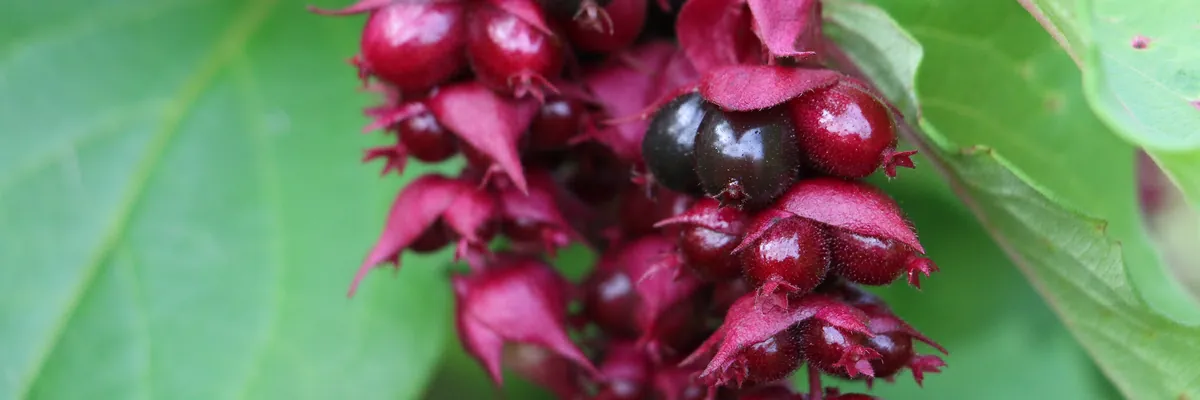

LEYCESTERIA formosa is a very old small shrub (also called pheasant berry), but still too little widespread in our gardens. And yet, it is an interesting plant during all seasons. In fact, in spring, its tender green young shoots are very decorative. In summer, this plant continues to bloom in white clusters, and it is in autumn that it reveals its fabulous edible fruits with a slightly burnt caramel taste. It’s a flavor that many have never tasted. Eat overripe fruit preferably. It is also a bay very popular with birds. Finally, in winter, its foliage remains for a very long time and the design of its branches is particularly attractive in a massif.
Adopt this deciduous plant without fear. It won’t take up much space in your garden or on your balcony. Its presence will be noticed. For lovers of yellow foliage, LEYCESTERIA formosa ‘Golden Lanterns’ (second photo) is a very bright variant with the same characteristics concerning the other points.
How to grow LEYCESTERIA formosa
This shrub can be planted in full sun, partial shade or in the shade. It really resists temperatures down to -20 °C and can find a place in any type of soil. It is a plant for beginners and experienced gardeners.
History and Origin
LEYCESTERIA formosa is native to India and China, where its natural habitat extends from Punjab all along the eastern Himalayas to the south-east of Yunnan (initial collection site) and to the north-east from Sichuan and eastern Tibet.
The word formosa means “beautiful” in Latin. Therefore, the species formosa refers to the beauty of the flowers and not to the origin. For a long time, much of the horticultural community believed that this deciduous shrub was native to Taiwan, as formosa is an abbreviation of the Portuguese word for the island of Taiwan.
Genetic testing by Zhang et al. revealed a close relationship with TRIOSETUM as well as HEPTACODIUM. In Europe, the English cultivated the pheasant berry for the first time in the United Kingdom in 1824. At the time of its introduction, specialists thought the plant sensitive to cold. It proved otherwise.
LEYCESTERIA formosa was a very common plant in gardens in the Victorian era. Indeed, the fruits were very appreciated by the pheasants raised in turn for hunting.
In its natural habitat, this small shrub grows in damp places (rocky undergrowth, cliffs). Since the 19th century, the pheasant berry has been known to resist atmospheric pollution and sea air.

